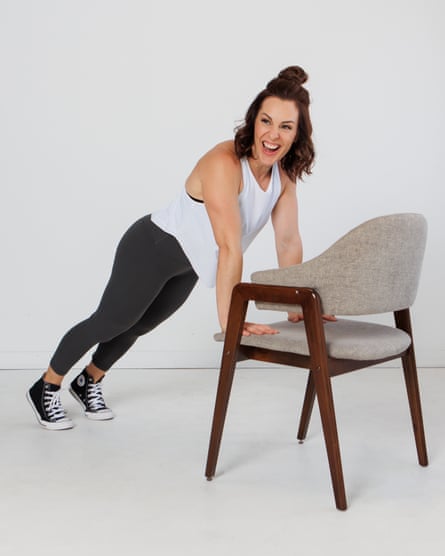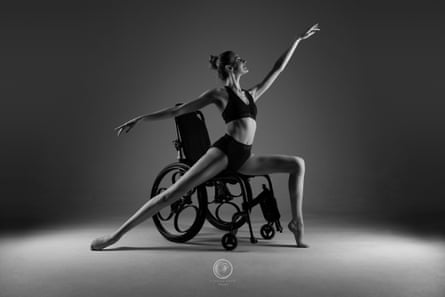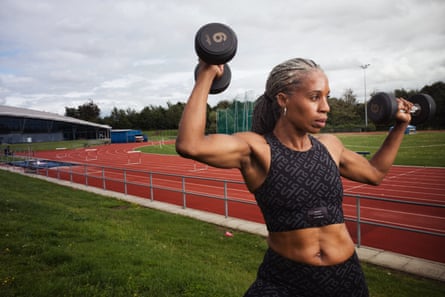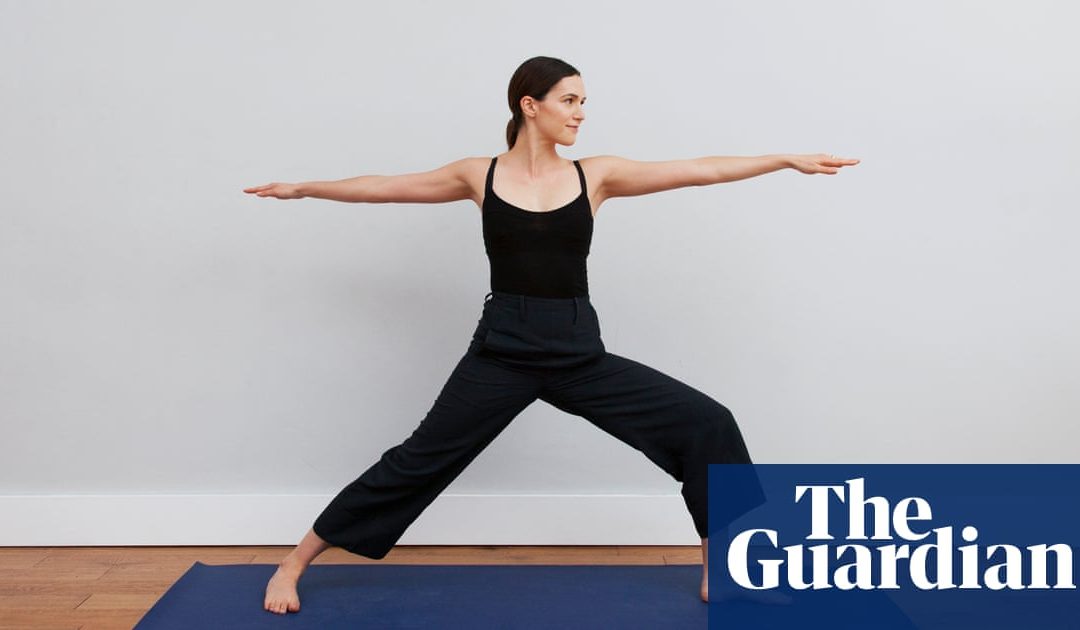We are swamped with advertising for gyms, yoga studios and personal training so it’s easy to assume that getting fit or improving a technique will be expensive. But there are plenty of free or affordable classes and programmes online. Here are some of the best places to start.
Ah, you like exercise to hurt, you say. Kassandra, also on YouTube, has quite a range and you could easily build up from nothing on 10-minute bite-size beginner videos. But when you get to a 30-minute intermediate Vinyasa, you will most likely break into a sweat. I fell over, but I was wearing ill-advised slippery socks. Apart from the rigour, I would recommend her mainly for her clear communication. Often when a yoga instructor says something like “Bring your knee cap to face the sky”, I can’t work out what it means and by the time I do, the exercise is over. Kassandra is precise. Plus, you can always hit pause. People prone to anxiety swear by her Yin routine.
You don’t have anxiety? Good, because fitness on Instagram is a sensory bin fire, like trying to attend a nightclub through your phone, while taking written instructions at the same time as physical ones. If you can cope with all these things, @asanarebel is a jewel of the genre, covering yoga from beginners up but stretching into Hiit workouts, mindfulness, toning and diet. If you find watching beautiful people doing things in any way motivating, you will like this.
This is a subscription app, not free, but you can try it for a fortnight before you commit. It is quite mission-driven (a lot of environmentalism and rewilding, of your gut and your patio – see more on Twitter @MFML_) and explicitly against the body-fascism that permeates the more visual platforms (“There’s no such thing as a beach body! All bodies deserve to be comfortable in the heat!”). The yoga is well structured, clear and watchable; the barre classes are great.

This is supposed to be an economy drive, so I’m reluctant to recommend a platform with a monthly subscription (£12.99) which also requires you to buy A Thing. Even assuming you already have a bike, you will have to buy A Thing, and I justify this by saying that all serious cyclists have an indoor option for weather/time constraints, and they all use Zwift, even the ones who say they never use anything. You turn a road bike into an indoor bike with a turbo trainer: just detach the back wheel and attach it to the sprocket; it’s really easy (very expensive new, but available on eBay for about £80). Then you join the platform, and it is amazing: tailored programmes, group rides, CGI scenery, data collection, functions that only elite cyclists would ever use (extremely challenging structured workouts), functions that Mamils (an acronym: middle-aged men in Lycra) really like (power-to-weight ratio calculators), but enough users that anyone at any level could find a virtual club to join or user to race.
A pair of extremely serious US cyclists – semi-pro mountain biker Frank Overton founded it; journalist and gravel rider Ben Delaney is his co-host – share coaching tips geared mainly towards the elite rider. Their workout suggestions can stretch to more than 100 minutes, their idea of kicking back and having fun is a six-hour mountain climb with mates and – I wouldn’t even suggest this for the general listener, except that it is quite motivating – listening to how much they love riding. You don’t have to be good to join their gang, you just have to love your bike – and for that all you need to do is ride it.
Anthony Walsh hosts this likable mix of coaching tips, Q&As and musings. One listener asked him the other day how to become a “smooth” rider, one of those elegant, supple, at-one-with-the-bike guys, and he said: “Watch the good lads, the good lads do stuff differently.” He has great in-ear presence and his coaching tips are on-the-nose, particularly for intermediates and above (I learned more about cadence than I will ever be able to use from his description of the ERG setting on Zwift).
Strength training

California-based Cori Lefkowith is straight-talking and a bit bossy, but before any of that, incredibly strong: I could watch her doing renegade rows for ever, just to marvel at the human form. (It’s a tricep curl using kettle bells, from a plank position, which looks impossible.) The workouts are thorough and varied; the accent is on bodyweight exercises. You won’t need a huge amount of equipment.
This one is a little eccentric, and isn’t free (£93/year), but stick with it: the Australian actor Chris Hemsworth has put together a complete workout and meal planner app. Its line is, presumably, that if you follow it faithfully, you end up looking more like Hemsworth, which is obviously unlikely. But it is very popular, mainly because it is so slickly produced: lovely graphics, varied workouts, daily planners, nice touches such as “household item hacks”. So if you don’t have sandbags, maybe you could use your giant bag of rice?
People who use it say Strava is all about community, which for practical purposes means sharing your stats with your brother-in-law then trying to destroy each other with ever-improving kilometres an hour or running-pace data for the rest of your lives. It’s like a cross between Facebook, a Fitbit and Wordle – connect, run/cycle/hike, collect data, show off.
In fact, when you drill in, the gamification sends them all a little bit crazy – one person I spoke to had drawn a Christmas tree with his route, complete with a star – but being nuts is good for motivation. It offers a three-month free trial, after which it is £4 a month.
I discovered Steve Hobbs a couple of years ago while scouting for a running-mindfulness tutorial (I can only take state-of-mind advice from a bloke in Epping Forest; by happy chance, there is one), and a fair amount of his output is coaching advice, but I stayed for the rambling. He will do a monologue, while he is running, about his mother-in-law, how insurance is a scam, what freedom really means. And it is brilliant because it is like having a running buddy, except you don’t have to talk back.
If you are pregnant

There are two main blocks to working out before and after pregnancy: the first is other pregnant women, who are always less tired, less gigantic, more graceful, better at glowing. The last thing you want is to be herded into a room with them. The second is the aesthetic – look for workouts online and suddenly you’re in a world full of purples and pinks, flowers and heavily seriffed fonts, as if because you are having a baby you are suddenly 12. The only alternative is a souped-up girl-power sensibility (Slam stands for “strong like a mother”), which is also grating, but the workouts are good and ain’t nobody so cool they can do without a pelvic floor.
Erica Ziel is not as much as of a rebel as her handle suggests. Rather she is prolific and diligent: podcasts, short-burst workouts on Insta, tailored programmes at ericaziel.com, sometimes very detailed (for instance, how to restore your core after a caesarean), other times comically California (“Non-negotiable self-care in motherhood” *laughs for ever*).
If you have a disability

The Newcastle-based model and ballet dancer Kate Stanforth has been ill, sometimes confined to bed, with ME (myalgic encephalitis) since she was 14 but has been dancing professionally since she was eight. Over time, she has adapted her dance teaching and performances so that they are sometimes wheelchair-based and sometimes improvised with balance aids such as a Swiss ball or big tree.
Zoe McKenzie also does one-to-one online coaching and is the author of an ebook, Actively Essentials, which covers essential pilates for the core, lying, sitting and standing, many of which can be done from bed. She has lupus, a fluctuating condition, and has a deep understanding of the limits of fitness patter – break through your pain barrier, feel the burn yada yada – applied to autoimmune conditions. Push yourself too hard with a chronic condition and you can end up worse off.
If you are older

The Olympic sprinter and former TV Gladiator Jenny Stoute has exactly the perfect, straight-bodied, elegant, strong technique that you would expect – you don’t end up in the Olympics for no reason. I like her mainly because she is always in a good mood. The videos are short and useful for drilling in the right way to do a particular exercise or use a piece of equipment.
This content was originally published here.

